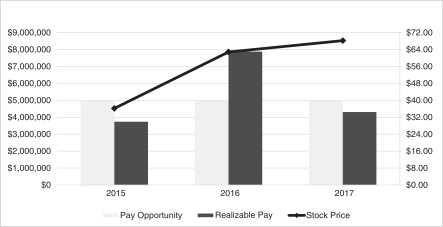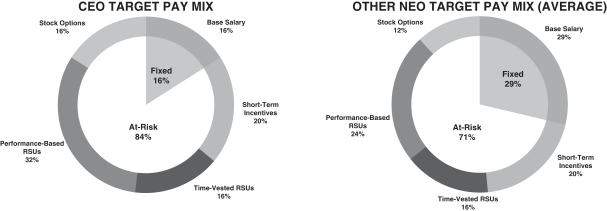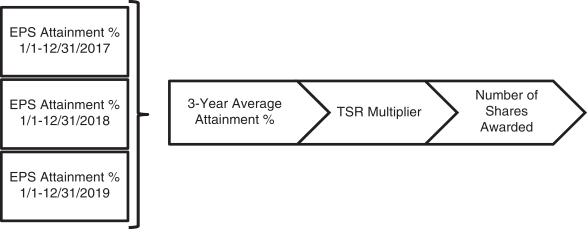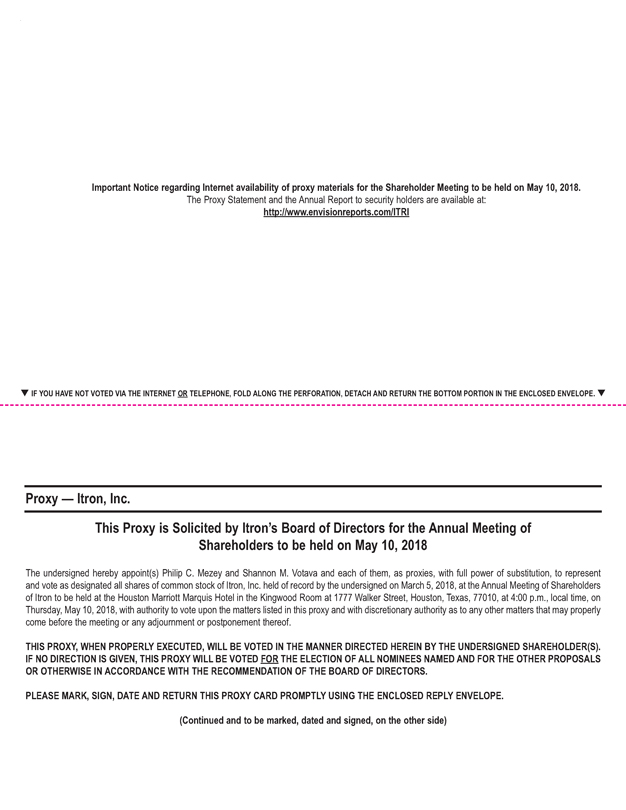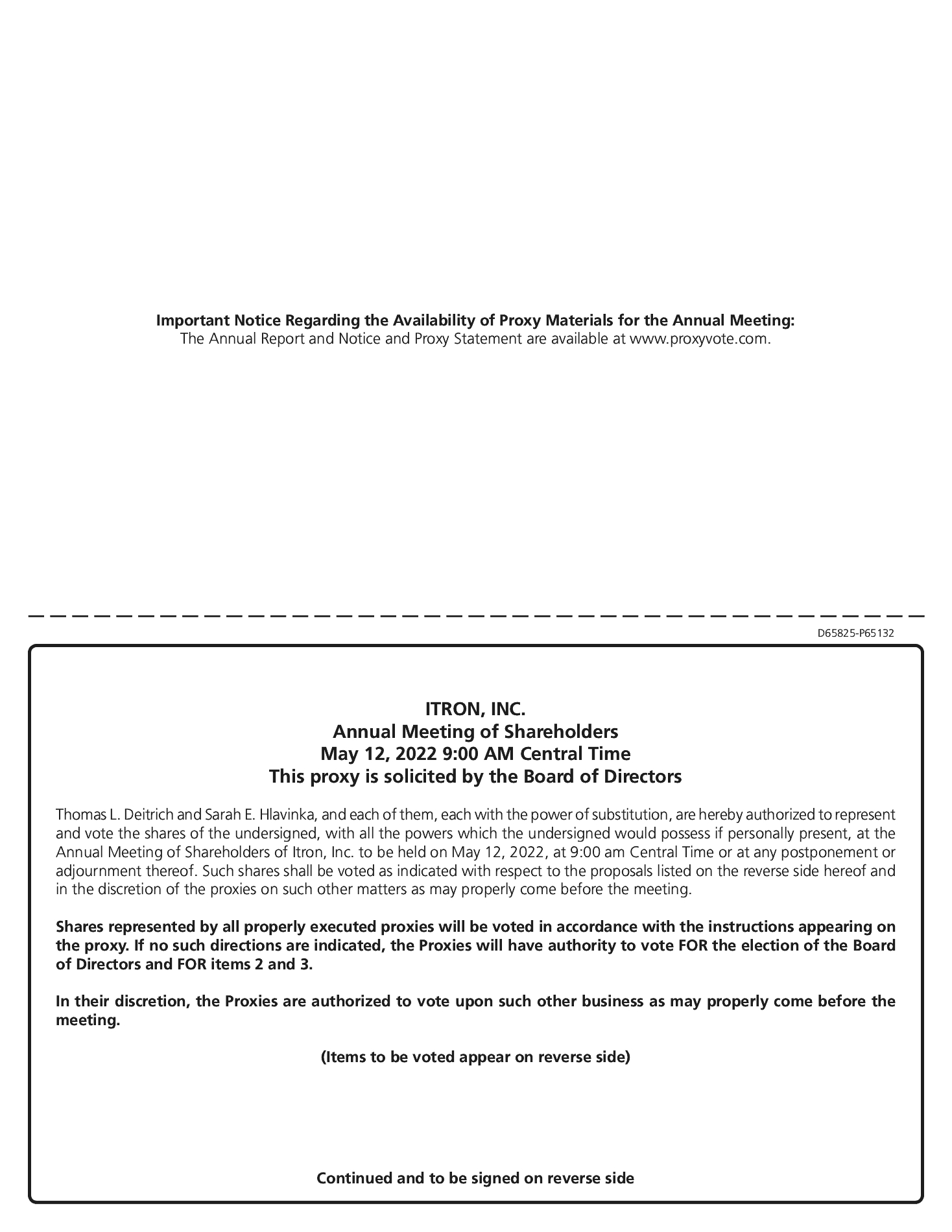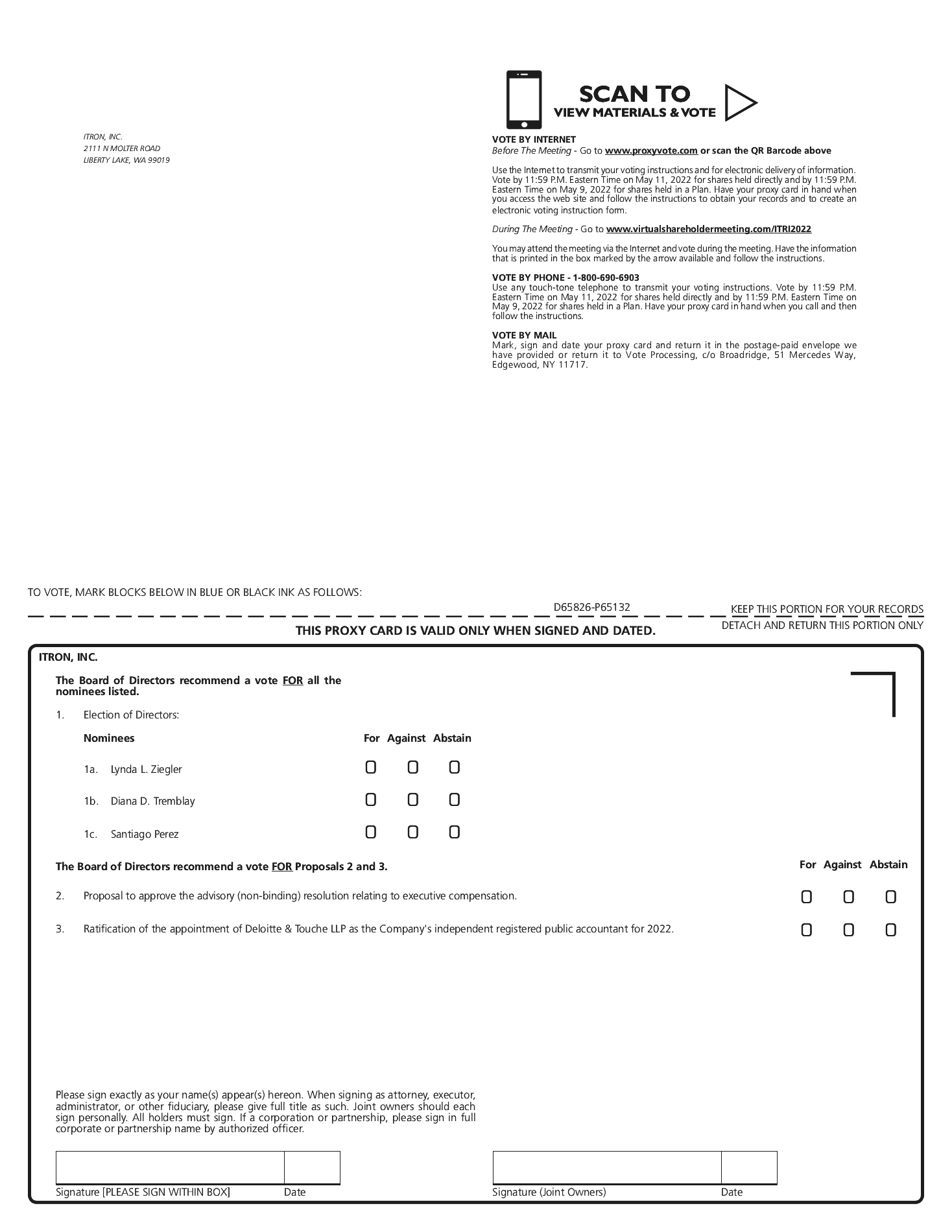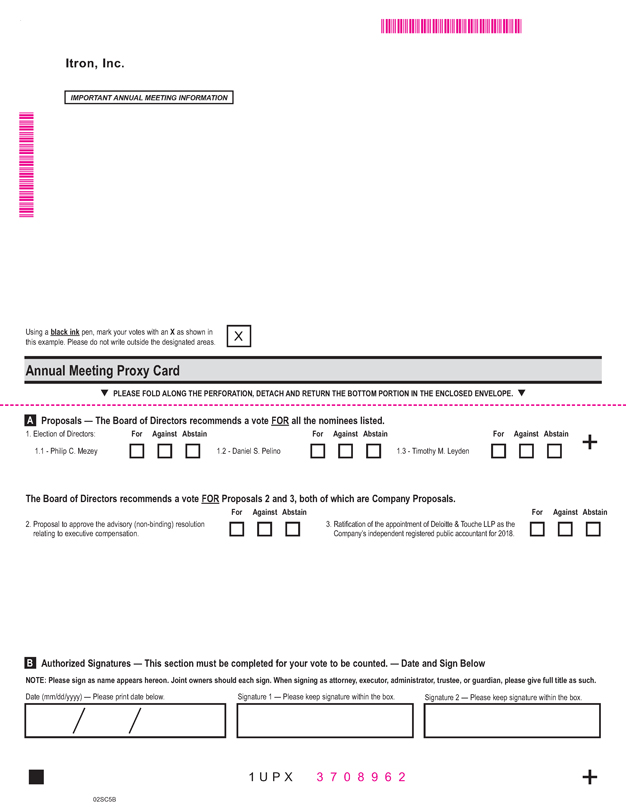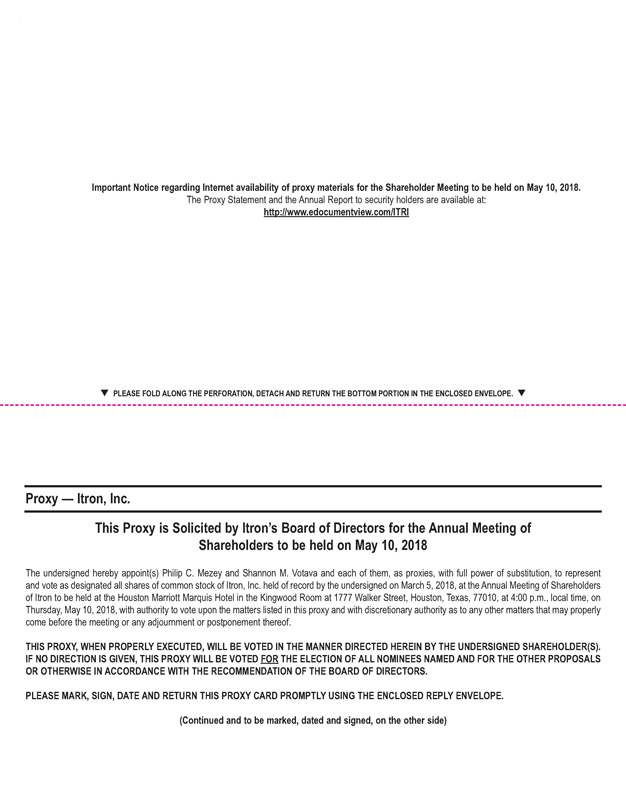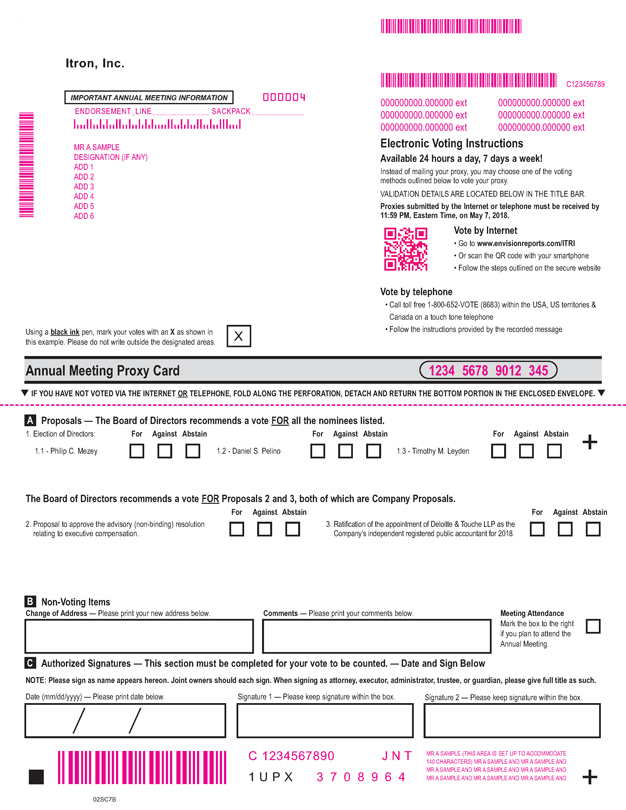EXECUTIVE COMPENSATION TABLES
Summary Compensation Table
The following table provides information regarding compensation of the Company’s NEOs. The amounts shown include amounts deferred at the executives’ election. All numbers are rounded to the nearest dollar.
| | | | | | | | | | | | | | | | | | | | | | | | | | | | | | | | |
Summary Compensation Table | |
Name and Principal Position | | Year | | | Salary
($) | | | Bonus
($) | | | Stock
Awards
($) (1)(2) | | | Option
Awards
($) (1) | | | Non-Equity
Incentive Plan
Compensation
($) (3) | | | All Other
Compensation
($) | | | Total
($) | |
Philip Mezey | | | 2017 | | | | 800,000 | | | | — | | | | 3,345,686 | | | | 800,001 | | | | 848,040 | | | | 90,931 | (4) | | | 5,884,658 | |
President and CEO | | | 2016 | | | | 800,000 | | | | — | | | | 2,805,949 | | | | 799,987 | | | | 1,292,480 | | | | 24,000 | | | | 5,722,416 | |
| | | 2015 | | | | 830,769 | | | | — | | | | 2,183,565 | | | | 799,998 | | | | — | | | | 45,236 | | | | 3,859,568 | |
| | | | | | | | |
Thomas Deitrich | | | 2017 | | | | 550,000 | | | | — | | | | 1,471,377 | | | | 499,995 | | | | 466,422 | | | | 12,150 | (4) | | | 2,999,944 | |
Executive Vice President and COO | | | 2016 | | | | 550,000 | | | | — | | | | 995,073 | | | | 500,000 | | | | 710,864 | | | | 7,950 | | | | 2,763,887 | |
| | | 2015 | | | | 126,923 | | | | 424,375 | | | | 2,999,997 | | | | 999,992 | | | | — | | | | — | | | | 4,551,287 | |
| | | | | | | | |
Michel Cadieux | | | 2017 | | | | 400,000 | | | | — | | | | 836,225 | | | | 199,989 | | | | 254,412 | | | | 14,562 | (4) | | | 1,705,188 | |
Senior Vice President, Human Resources | | | 2016 | | | | 400,000 | | | | — | | | | 634,427 | | | | 199,989 | | | | 387,744 | | | | 11,769 | | | | 1,633,929 | |
| | | 2015 | | | | 415,384 | | | | — | | | | 414,312 | | | | 199,996 | | | | — | | | | 30,403 | | | | 1,060,095 | |
| | | | | | | | |
Shannon Votava | | | 2017 | | | | 400,000 | | | | — | | | | 582,526 | | | | 149,992 | | | | 220,490 | | | | 30,763 | (4) | | | 1,383,771 | |
Senior Vice President, General Counsel and Corporate Secretary | | | 2016 | | | | 397,467 | | | | — | | | | 443,830 | | | | 137,498 | | | | 336,045 | | | | 7,950 | | | | 1,322,790 | |
| | | 2015 | | | | 377,300 | | | | — | | | | 315,789 | | | | 124,992 | | | | — | | | | 7,950 | | | | 826,031 | |
| | | | | | | | |
Joan Hooper (5) (6) | | | 2017 | | | | 279,808 | | | | — | | | | 468,664 | | | | 250,044 | | | | 177,465 | | | | 4,757 | (4) | | | 1,180,738 | |
Senior Vice President and CFO | | | | | | | | | | | | | | | | | | | | | | | | | | | | | | | | |
| | | | | | | | |
Robert Farrow (6) (7) | | | 2017 | | | | 312,804 | | | | — | | | | 291,102 | | | | 34,998 | | | | 127,206 | | | | 12,017 | (4) | | | 778,127 | |
Vice President, Strategic Planning and Treasury; Former Interim CFO | | | | | | | | | | | | | | | | | | | | | | | | | | | | | | | | |
| | | | | | | | | | | | | | | | | | | | | | | | | | | | | | | | |
| | | | | | | | |
W. Mark Schmitz (8) | | | 2017 | | | | 172,788 | | | | — | | | | 1,045,278 | | | | 249,986 | | | | — | | | | 504,650 | (4) | | | 1,972,702 | |
Former Executive Vice President and CFO | | | 2016 | | | | 475,000 | | | | — | | | | 810,007 | | | | 249,993 | | | | 460,446 | | | | 7,950 | | | | 2,003,396 | |
| | | 2015 | | | | 479,808 | | | | — | | | | 532,801 | | | | 249,996 | | | | — | | | | 44,005 | | | | 1,306,610 | |
| | Thomas Deitrich
President and CEO | | | 2021 | | | 800,000 | | | — | | | 2,877,281 | | | — | | | 850,000 | | | 13,050(4) | | | 4,540,331 | |
| | 2020 | | | 800,000 | | | — | | | 2,075,403 | | | 749,976 | | | — | | | 12,825 | | | 3,638,204 | |
| | 2019 | | | 650,000 | | | — | | | 3,333,990 | | | 1,999,984 | | | 567,668 | | | 12,600 | | | 6,564,242 | |
| | Joan Hooper
Senior Vice President and CFO | | | 2021 | | | 520,000 | | | — | | | 1,709,125 | | | — | | | 331,500 | | | 23,175(4) | | | 2,583,800 | |
| | 2020 | | | 511,298 | | | — | | | 949,389 | | | 312,479 | | | — | | | 39,138 | | | 1,812,304 | |
| | 2019 | | | 485,000 | | | — | | | 1,314,265 | | | — | | | 310,097 | | | 19,634 | | | 2,128,996 | |
| | Sarah Hlavinka
Senior Vice President, General Counsel and Corporate Secretary | | | 2021 | | | 475,000 | | | — | | | 785,760 | | | — | | | 302,813 | | | 19,601(4) | | | 1,583,174 | |
| | 2020 | | | 475,000 | | | — | | | 601,480 | | | 174,983 | | | — | | | 40,931 | | | 1,292,394 | |
| | 2019 | | | 475,000 | | | — | | | 614,992 | | | — | | | 248,484 | | | 23,809 | | | 1,364,284 | |
| | Michel Cadieux
Senior Vice President, Human Resources | | | 2021 | | | 410,000 | | | — | | | 853,577 | | | — | | | 261,375 | | | 9,225(4) | | | 1,534,177 | |
| | 2020 | | | 407,514 | | | — | | | 641,079 | | | 199,992 | | | — | | | 16,425 | | | 1,292,394 | |
| | 2019 | | | 400,000 | | | — | | | 733,583 | | | — | | | 232,500 | | | 9,000 | | | 1,362,284 | |
| | Donald Reeves
Senior Vice President, Outcomes | | | 2021 | | | 425,000 | | | — | | | 496,103 | | | — | | | 216,750 | | | 11,947(4) | | | 1,149,800 | |
| | 2020 | | | 425,000 | | | — | | | 326,812 | | | 112,487 | | | — | | | 13,070 | | | 877,369 | |
| | 2019 | | | 425,000 | | | — | | | 308,104 | | | — | | | 164,688 | | | 18,110 | | | 915,901 | |
(1)
| These columns reflect the aggregate grant date fair value of RSU and PRSU awards granted under our Long-Term Incentive Plan (LTIP) and A&R 2010 Plan or Second A&R 2010 Plan as applicable,(2010 SIP) determined in accordance with FASB ASC Topic 718. SeeNote 9of the consolidated financial statements in our Annual Report on Form10-K for the year ended December 31, 20172021 regarding assumptions underlying the valuation of thesethe equity awards. awards granted in 2021. |
(2)
| Includes the grant date fair value of Performance RSUs (PRSUs)PRSUs assuming target performance achievement. As the performance-contingent awards are based on separate measurements of the Company’sCompany's financial performance for each year in the three-year performance cycle, FASB ASC Topic 718 requires the grant date fair value to be calculated for the portion of the award related to performance in each year. Therefore, the value includesone-third of the target PRSUs for each active three-year performance cycle. The values for 2015 and 2016 have been corrected to include the grant date fair values of the target PRSUs for the 2016 and 2017 portions of the performance cycles where applicable. For more details on how performance is calculated, refer to “A Closer Look at Performance-Based Restricted Stock Units (PRSUs)” in this CD&A. proxy statement. |
| The grant date fair value of the performance related component is based upon the probable outcome for the award and is consistent with the estimate of aggregate compensation cost to be recognized over the performance period determined as of the grant date under FASB ASC Topic 718. As required under FASB ASC Topic 718, the full grant date fair value for the TSR multiplier for the entire three-year performance cycle is included in the amounts shown for the initial year of each performance cycle and was determined using a Monte Carlo valuation model on the date the PRSUs were awarded. Grant date fair values assuming maximum performance achievement for the 2017 PRSUs for the full performance cycle (2017-2019) would be: P. Mezey – $3,348,045; T. Deitrich – $2,092,528; M. Cadieux – $837,011; S. Votava – $627,690; J. Hooper – $1,051,995; R. Farrow – $146,360; W. Schmitz – $1,046,196.
|
The grant date fair value of the financial performance related component is based upon the probable outcome for the award and is consistent with the estimate of aggregate compensation cost to be recognized over the performance period determined as of the grant date under FASB ASC Topic 718. As required under FASB ASC Topic 718, the grant date fair value for the TSR multiplier is recalculated and included in the amounts shown for 2021 for the 2021 portion of the award in each active performance cycle and was determined using a Monte Carlo valuation model on the date the PRSUs were awarded. Grant date fair values assuming maximum performance achievement for the 2021 PRSUs for the full performance cycle (2021-2023) would be: T. Deitrich - $3,201,461; J. Hooper - $1,493,929;
S. Hlavinka - $853,552; M. Cadieux - $853,552; D. Reeves - $480,069.
(3)
| This column reflects the cash awards earned by the NEOs under our annual incentive program. |
(4)
| We value these benefits based on the actual costs or charges incurred by us for the benefits. For each executive, theThe amounts shown under “All Other Compensation” consistsconsist of Company 401(k) matching contributions with the exception of $13,050 for Mr. MezeyDeitrich, $12,825 for Ms. Hooper, $11,276 for Ms. Hlavinka, $9,225 for Mr. Cadieux, and Ms. Votava’s values which also include$11,947 for Mr. Reeves; a company match under the Executive Deferred Compensation Plan of $78,781 and $16,126, respectively, and Mr. Schmitz’s value which also includes severance payments. Mr. Schmitz received severance payments pursuant to our Executive Officer Severance Policy which provides severance pay equal to one year’s base salary ($475,000) and outplacement assistance ($17,500). Payments are subject to Mr. Schmitz’s compliance with thenon-competition and other terms of the policy. |
(5) | Ms. Hooper joined the Company as Senior Vice President and CFO effective June 5, 2017. Her annual base salary upon hire was $485,000.
|
(6) | $10,350 for Ms. Hooper and Mr. Farrow were not NEOs prior to 2017; therefore, compensation data$8,325 for those years is not disclosed. Ms. Hlavinka. |











